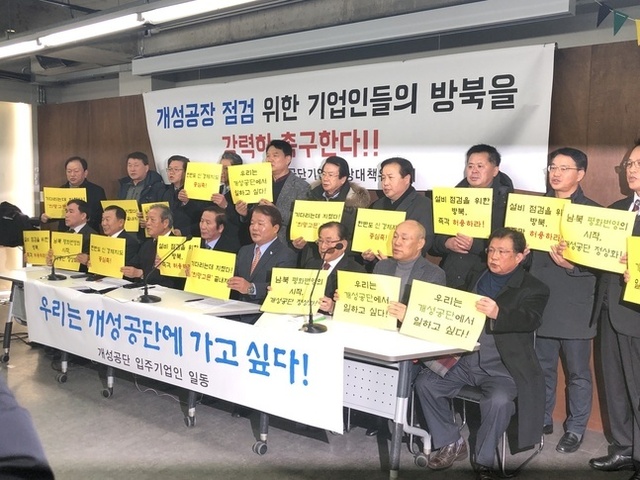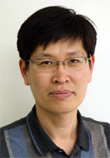 |
|
Kaesong Industrial Complex business owners hold a press conference on Jan. 9 in Seoul demanding that they be allowed to visit their facilities. (Corporate Association of Kaesong Industrial Complex)
|
UNSC sanctions have provisions allowing for exemptions
This coming Feb. 10 marks the third anniversary of the suspension of operations at the Kaesong Industrial Complex. The improvements in inter-Korean relations since last year have fanned hopes among the complex’s business owners that operations may resume, but at the moment such prospects remain like a rainbow – seemingly within grasp yet just out of reach. A recent application by the tenant company owners to visit the complex and check on their abandoned facilities once again failed to yield results. The Korean Peninsula’s political situation may have changed, but unfortunately the thick fog around the Kaesong Industrial Complex has yet to lift. While I was attending a panel discussion at a forum last week, I had a chance to hear the complaints of Shin Han-yong, chairman of the Corporate Association of Gaeseong Industrial Complex (CAGIC). “In the Apr. 27 Panmunjeom Declaration last year where [the South and North Korean leaders] agreed to set up a joint inter-Korean liaison office in the ‘Kaesong region,’ we saw hope for the resumption of operations at the Kaesong Complex,” he explained. While he was joining President Moon Jae-in’s visit to Pyongyang last September, President Moon made a point of calling him over and introducing him to North Korean leader Kim Jong-un as someone who “came because he deeply hopes that operations at the Kaesong Industrial Complex can resume,” he said. On their way back to Seoul, President Moon offered a message of consolation. “The North is also committed to resuming operations at the Kaesong Complex. We get anxious when we think the time has come,” he recalled the president telling him. “There’s a time for everything. You just need to wait a bit longer.” Shin continued holding out hopes. “When Kim Jong-un talked in his New Year’s address about being ‘willing to resume the Kaesong Industrial Park with any precondition and in return for nothing,’ I thought, ‘This year’s task will be the Kaesong Complex,” he said. At the same time, he voiced his frustration over the difficult situation, which has seen seven visit applications fail to pan out. The panel’s overall predictions were divided when it comes to ideas for resuming operations at the Kaesong Complex and tourism at Mt. Kumgang. In one presentation, attorney Kim Gwang-gil said resumptions were unlikely to pass through the dense mesh of North Korea sanctions by the UN Security Council and US. In the wake of the North’s fourth nuclear test in Jan. 2016, the sanctions’ scope was expanded from its early focus on nuclear- and missile-related supplies to encompass all areas of the North Korean economy. Any resumption of operations at the Kaesong Industrial Complex would run up against provisions such as bans on financial support to the North and the transport of textile goods, machinery, and electronic devices in or out of the North. While no provisions exist to prevent tourist visits per se at Mt. Kumgang, the transport of items to repair accommodation facilities is reportedly an issue. This doesn’t mean there are no options at all. The UNSC sanctions have provisions allowing exceptions for humanitarian aid and efforts to reduce tensions and promote peace on the Korean Peninsula. In the case of the US’ North Korea Sanctions and Policy Enhancement Act, exceptions can be granted if the president submits documents to Congress stating that they are necessary for humanitarian assistance or contributing to the peaceful reunification of a democratic Korean Peninsula. In logical terms, it would suffice to receive a general exemption by providing that the Kaesong Industrial Complex and Mt. Kumgang efforts contribute to peace and reunification for the Korean Peninsula. It would be possible to resume both through the current exceptions without tinkering with the existing sanctions system, which would obviate the need to go through the difficult process of having the sanctions lifted. Some of the other ideas suggested during the discussion included setting up supermarkets near the complex to allow North Korean workers to receive their wages in kind – thus averting the possibility of their payment being diverted toward military uses – or paying the wages into an escrow account subject to withdrawal restrictions. How realistic these ideas are is a matter for further debate, but it is clear that if we are committed enough, the technical issues at least are eminently solvable. The key seems to be whether the US and the rest of the international community support a resumption of complex operations and tourism.
 |
|
Park Byong-su, editorial writer
|







